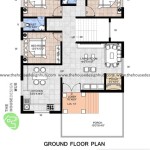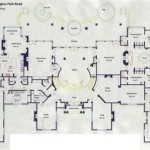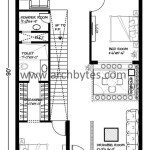Essential Aspects of Drawing Floor Plan In AutoCAD
AutoCAD is a powerful software program used by architects, engineers, and other professionals to create precise and detailed drawings. Drawing floor plans in AutoCAD is a fundamental skill that allows designers to create a graphical representation of a building's layout. Here are some essential aspects to consider when drawing floor plans in AutoCAD.
1. Units and Scale
Before starting to draw, it's crucial to set the correct units and scale for your drawing. The units define the measurements (inches, feet, meters, etc.) used in the drawing, and the scale determines the relationship between the drawing and the actual size of the building. Selecting appropriate units and scale ensures accurate measurements and dimensions.
2. Layers
Layers are like separate transparent sheets stacked on top of each other, allowing you to organize and manage different elements of your drawing. For example, you can create separate layers for walls, doors, windows, furniture, and annotations. Using layers helps keep the drawing organized and makes editing and revisions easier.
3. Wall Construction
Drawing walls accurately is essential for creating a realistic floor plan. AutoCAD provides various tools for drawing walls, including the Wall command, which allows you to specify wall thickness, height, and materials. You can also add doors and windows to the walls using the appropriate commands.
4. Doors and Windows
Doors and windows are important components of a floor plan. AutoCAD offers a library of standard door and window symbols that you can insert into your drawing. Alternatively, you can create custom symbols if needed. When placing doors and windows, ensure they are aligned correctly with the walls and at the appropriate elevations.
5. Furniture and Fixtures
Furniture and fixtures represent the objects and equipment within a space. AutoCAD provides a rich library of symbols for various furniture items. You can also import custom symbols if necessary. Arrange furniture and fixtures to create a realistic and functional layout.
6. Dimensions and Annotations
Dimensions and annotations provide critical information about the size and details of the floor plan. Use the Dimension command to add measurements to walls, doors, windows, and furniture. Annotations can include text notes, symbols, or other information that clarifies the drawing's intent.
7. Plotting and Printing
Once your floor plan is complete, you may need to plot or print it. AutoCAD allows you to set the paper size, scale, and print quality. Consider the purpose of your drawing when selecting the appropriate plotting and printing options.
Conclusion
Drawing floor plans in AutoCAD requires precision, organization, and attention to detail. By understanding the essential aspects discussed in this article, you can create accurate and informative floor plans that effectively communicate your design intent. Practice and experience will further enhance your AutoCAD skills and allow you to produce professional-quality drawings.

Making A Simple Floor Plan In Autocad Part 1 Of 3

How To Draw Floor Plans In Autocad Edrawmax

First Floor Plan Of Residence Detail Presented In This Autocad Drawing File 2d Auto Cad Ca Layout

How To Draw Floor Plans In Autocad Edrawmax

Autocad Drawing And Coohom Design 3d Fast Rendering Blog

Is Autocad The Best Floor Plan For Estate Agents Elements Property

How To Draw Autocad Floor Plan Cad Cam Blog

Floor Plan Free Cads

33 5 X45 Amazing 2bhk East Facing House Plan As Per Vastu Shastra Autocad Dwg And File Details Cad Free Plans Budget

30 X30 House Layout Plan Autocad Drawing Dwg File Cadbull








